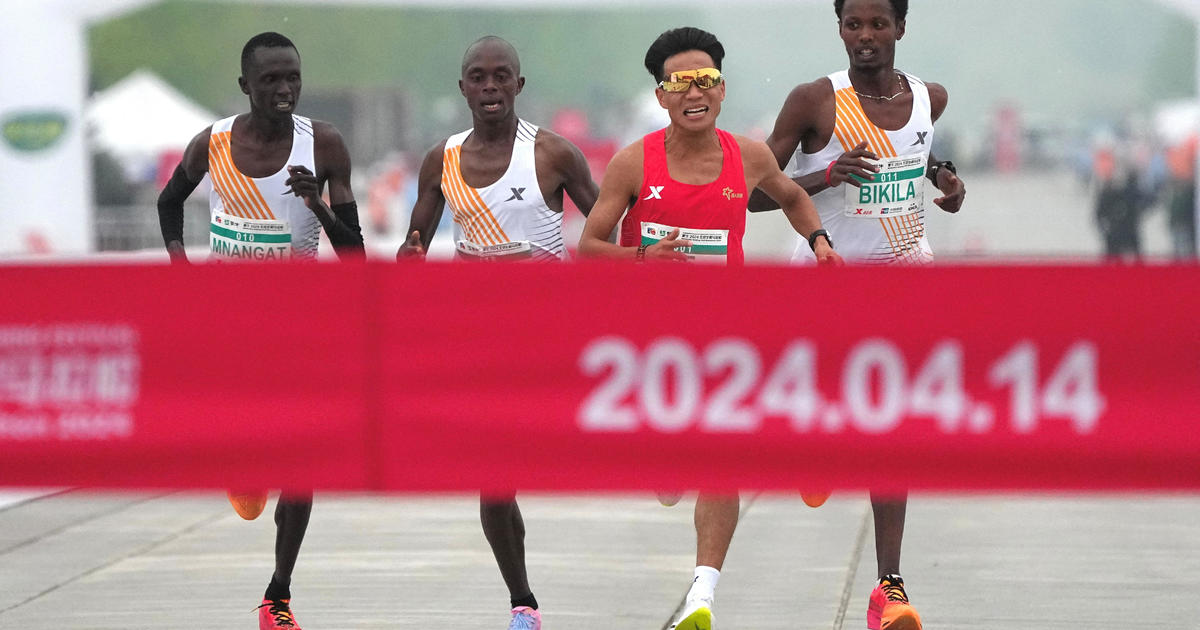Watching for new COVID variants in wildlife "now critical," CDC says
Citing concerns over new coronavirus variants that are mutating in American wildlife and could spread back to humans, the Centers for Disease Control and Prevention is now urging health authorities to ramp up their efforts to regularly track the spread of the virus in animals.
The shift in the CDC's guidance, which strips out an earlier recommendation that state agencies could "avoid routine animal testing," comes as key officials from across the country have been huddling to strategize over the potential threat. It's part of the CDC's "One Health" initiative, which focuses on how human health "is closely connected to the health of animals and our shared environment."
"One of CDC's primary One Health concerns is the establishment of a North American animal reservoir in which the virus could 'hide,' mutate, and potentially re-emerge as a new variant in the human population," Jasmine Reed, a CDC spokesperson, said in a statement.
It echoes similar recommendations last month from the World Health Organization, which called out the risk posed by the virus circulating among North American deer.
In January, blood collected from white-tailed deer by the Agriculture Department's Animal and Plant Health Inspection Service (APHIS) in four states — Illinois, Michigan, New York, and Pennsylvania — turned up antibodies to the virus in at least a third of their samples.
That agency has backed several other projects to study the spread of the virus in American wildlife, including an effort to test rats around New York City's sewer systems as well as wildlife around mink farms. Mink appear to be highly susceptible to the virus, and in some cases have spread it to humans.
"These and other wildlife surveillance projects are important because scientists estimate that three out of every four new or emerging infectious diseases in people come from animals," Lyndsay Cole, an APHIS spokesperson, said in a statement.
Cole said that, based on "limited information available," the risk of animals spreading SARS-CoV-2 back to people was low. However, APHIS still urged Americans to keep their families, including their pets, at "a safe distance from wildlife and their droppings."
A study from researchers in Canada, which has not yet been peer-reviewed, recently found evidence suggesting "spillback" from deer — the virus spreading back to humans — had occurred there with a highly-mutated variant.
"Given our current state of knowledge in the pandemic, we have updated CDC's Evaluation for SARS-CoV-2 Testing in Animals to reflect that surveillance efforts are now critical for early detection and prevention of virus spillover from animals, especially wildlife, to people," said Reed.
Strategizing for the virus in wildlife
While this is not the first virus public health officials have worked to track and prevent spreading between humans and animals, deer have so far appeared to be alone in North America in spreading SARS-CoV-2 in the wild.
"We also are starting to see efficient deer-to-deer transmission. In other words, when deer get it, we're seeing that it actually seems to adapt to the deer and that, because of their nature, in congregations together that they can actually spread," said the University of Minnesota's Jeff Bender.
Bender led a pilot project to test hundreds of wild animals in Minnesota to look for SARS-CoV-2, as part of a study funded by the CDC and the Council of State and Territorial Epidemiologists. White tailed deer were the only species to test positive.
While isolated COVID-19 cases have been spotted in hundreds of animals around the country, ranging from household pets to zoo animals, a nationwide tally maintained by APHIS has only turned up wild cases of SARS-CoV-2 spreading in deer.
"Who knows all the ways that SARS-CoV-2 got into deer? You and I could both make a list and they'd all be valid, either being in close contact with a deer, through feeding, or baiting, or farming of deer, as well as petting zoos. And just close contact people may have with deer in their yards," said Colin Gillin, Oregon's state wildlife veterinarian and the vice chairman of the health committee for the Association of Fish and Wildlife Agencies.
Gillin said he has been meeting with a group of experts from an array of state and federal agencies, including the CDC and the Agriculture Department, which has been weighing new strategies that authorities could deploy to track and respond to the virus in wildlife.
"There aren't mandates on any of this, of course, because every state makes up its own decision. But they could take some of the tools or ideas from all these experts, and then look at the list as it relates to your state, and then decide to utilize something that came out of the committee," said Gillin.
For example, states might adjust their surveillance or decide to impose limits on the feeding or handling of wild deer, Gillin ventured, based on modeling by the agencies.
Bender, who previously served as director of the U.S. Agency for International Development's One Health Workforce Project, pointed to other diseases like Ebola or West Nile Virus where broad swaths of government agencies collaborate to come up with ways to mitigate the risk of transmission between wildlife and humans.
"These types of projects really do require the strength and cooperation of the state and regional partnerships, and gets into that One Health concept," Bender said.
Experts have already been collaborating on coming up with ways to reduce the risk of SARS-CoV-2 spreading to animals, said Bender, like potentially treating wastewater or vaccinating zoo animals, as well as educating the public.
In response to outbreaks linked to animals in captivity abroad, some countries have also resorted to more dramatic steps to curb the risk of new spillback events.
Back in 2020, Denmark moved to cull millions of farmed mink. Amid a record-high wave in January, Hong Kong ordered thousands of hamsters and other small animals to be put down. But Bender cautions, that's not really an option in wild animal populations.
"One of the things we don't want to do, and we've seen historically in the past, is 'oh, we'll need to kill the wildlife.' And that's just really not a viable strategy," he said.



